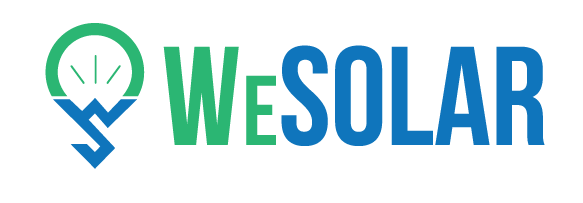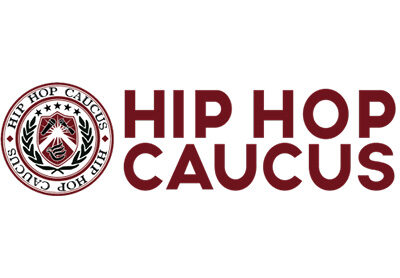Solving America’s Solar Inequality Starts In the Neighborhood


The indifference of middle-aged, White car salesmen gave Kristal Hansley her start in green energy. She had just finished a stint on Capitol Hill in the summer of 2017, when she started working at a Chevy dealership outside of Baltimore. She was the only Black woman on the showroom floor. Her coworkers, mostly White men, were more interested in selling Corvettes and Silverados than the electric vehicles on show. So Hansley carved out a niche selling Bolts and Volts, making a dozen sales of the electric models every month.
“It was a key moment,” Hansley says. “I got a front row seat of who gets to benefit from green rebates and other incentives. Mainly wealthier people.”
Last year the 32-year-old started WeSolar, a company that focuses on community solar, a nascent but fast-growing part of the industry. Virtual solar, as it’s sometimes called, falls between private rooftop installations and utility-size solar projects. The projects bring power to households and businesses from small, offsite solar farms, instead of rooftop panels. Customers buy stakes in them, and get a credit on their monthly utility bills based on their usage.
Hansley is the first Black woman in the U.S. to run a community solar business, but she wants to be more than a clean energy champion. For all the good of green energy, the reality is that it’s repeating, and perpetuating, the disparities of systemic racism. The solar business is glaringly White—from its C-suites to the higher-income households who’ve primarily reaped the benefits of private rooftop panels. All the while, Black and other underserved neighborhoods disproportionately suffer from fossil fuel pollution and climate change hazards. Hansley is on a mission: She wants to head to some of the roughest zip codes in the U.S. to “bring solar to the hood.”
“There’s a clean-energy divide,” says Hansley, who founded her startup on Juneteenth—the day that marks the end of slavery—as racial justice protests were underway all over the country last year. “So why not be the bridge and go into communities that have been left for dead?”
Community solar is a small part of the solar industry, but can play a big role in the race to a low-carbon economy. Rooftop solar has traditionally been sold to a specific group of people: homeowners who had high credit scores and could afford the initial investment. Black people and other underserved groups have faced a barrage of obstacles in getting rooftop solar. Community solar, however, offers buy-in at a lower price. And it has the potential to help the nearly half of U.S. households that are considered low income and pay a larger share of their incomes on energy bills.
“Community solar can be an important answer to who gets to participate and benefit in the energy transition,” says Gabriel Chan, assistant professor at the University of Minnesota’s Humphrey School of Public Affairs, who researches policies on energy technology innovation to help mitigate climate change. “It can address the energy burden of low-income residents.”
esides benefitting renters and those living in properties with too much shade, customers can typically save about 15% on their energy bills, according to estimates from the Coalition for Community Solar Access, a trade group in Washington. For low- and moderate-income residents, savings vary by company, utility and state. In Maryland, for instance, such customers can get a 50% higher discount than other residents, the trade group says.
Eighty-five miles north of New York City, on the outskirts of the town Poughkeepsie in the Hudson Valley, dozens of rows of blue solar panels blanket a 17-acre field like graph paper. Surrounded by thick woods and the Catskill Mountains on the horizon, about 8,800 rectangular panels, much like giant microchips, tilt southwards to capture the sun’s rays to convert into electricity. This community solar farm—one of the biggest in New York and run by Clearway Energy Group—produces 2 megawatts of electricity, enough for about 500 homes, half of which are low and moderate income.
Community solar farms usually cover 10 acres to 25 acres of land, and each generate between 2 and 5 megawatts of power, enough for 350 to 900 homes, according to the Coalition for Community Solar Access. The ground-mounted panels on many of the farms have created ideal habitats for pollinators and spurred a flourishing business in sheep grazing.
What first started out in Colorado has now expanded to some 2,000 community solar projects across 39 U.S. states, with about 20 states and Washington D.C. having so far passed legislation to support them, according to the U.S. National Renewable Energy Laboratory. Minnesota and Massachusetts lead the way, accounting for about half of cumulative capacity, followed by New York and Florida. Community solar capacity in the U.S. has doubled year over year in the past decade to about 2,600 megawatts as of June, NREL says. Still, it’s a fraction of the total solar industry, whose installed capacity stood at 89 gigawatts as of the end of September, the SEIA says. That’s enough to power 16.4 million homes.
Since community solar projects vary by company, utility and state, there are different business models. Community solar firms like Hansley’s are paid by developers to primarily amass customers and manage billing. Hansley says she plans to work with developers to lease land for new solar farms. Hansley has started developing solar projects herself, by building infrastructure and leasing property for new solar farms.
Before starting out on her own, Hansley worked at a community solar business in Maryland. She visited blighted neighborhoods in Baltimore—including the one where Freddie Gray was arrested and later died in police custody, spurring nationwide protests—explaining to residents that they could get a discount of 25% on their energy bills. But unlike the scientists, Sierra Club members and other professionals that Hansley had once sold electric vehicles to, and who knew about the clean-energy incentives available to them, the inner city residents were initially skeptical of Hansley’s pitch. Years of being targeted by predatory lenders, suffering the effects of redlining and other forms of racial discrimination, had left them distrustful of systems in which they had been treated unfairly.
“The number one thing people would say to me is ‘Where’s the catch? I don’t believe this, it’s too good to be true,’” Hansley says. “The problem is that there have been all these wrongs, so we’re so traumatized as a society. Community solar is a legit product.” She has partnered with local churches and community groups to help break barriers and build trust.
Other companies have seen success in selling to low-income communities. About four years ago, Pivot Energy started offering community solar to residents in and around Denver. Today, almost a fifth of those subscribers are low- and moderate income, and founder Rick Hunter is hopeful that number will rise as policy makers require solar providers to cater to such residents.
But Hunter laments the obstacles to faster adoption. Technology is one, he says. Customers who don’t have internet access can’t use online billing. And automated billing requires checking accounts, a big obstacle for people who don’t have bank accounts, he says. “It can also be confusing when residents get two bills, one showing a credit and the other showing a cost,” Hunter says. “It’s not always easy to see the savings.”
Moreover those savings aren’t always guaranteed because subscription models vary by project, according to Jenny Heeter, senior energy analyst at NREL. Other challenges include low-income residents having to provide records to verify their incomes and tax returns, and not all states have policies that enable community solar, she says.
“And even if they do, community solar can get crowded out by bigger renewable energy projects that states want to focus on instead to meet their low carbon targets,” Heeter says.
After controlling for home ownership and household income, census tracts with Black and Latinx majorities installed on average 69% and 30% less solar respectively, compared with tracts with no racial majority, researchers at Tufts University and the University of California, Berkeley say in a 2019 report. White-majority census tracts had installed 21% more solar. The lack of racial diversity in the renewable energy workforce has hindered uptake of solar in minority neighborhoods, says Sergio Castellanos, one of the researchers.
The solar industry is working to rectify its lack of diversity. The Solar Energy Industries Association has partnered with Historically Black Colleges and Universities Community Development Action Coalition to boost industry recruitment of African-American students, and is working with the National Association for the Advancement of Colored People to boost solar in minority communities, and support workforce development. In October, a group of renewable energy companies started Renewables Forward, an initiative to promote industry diversity and inclusion.
Gilbert Campbell is one of the few Black solar executives. He co-founded Volt Energy in Washington D.C. more than a decade ago. But he worries about the emergence of a “climate wealth gap,” where not only minority residents miss out on the benefits of solar, businesses like his don’t get a fair shake on lucrative solar contracts.
“It’s the entire eco-system of engineers, attorneys and accounting firms that are missing out on business,” says Campbell. “That prevents African Americans from building their wealth.”
Hansley’s and Campbell’s companies are teaming up to offer community solar to inner city residents in Washington D.C. and Maryland. Hansley is working on other projects, including a solar farm in Maine, a new outpost in her hometown of Brooklyn and raising money from impact investors. Her goal is to bring 10 megawatts of capacity online this year, she says.
“We need to be part of energy solutions,” she says. “Not on the outside.”




